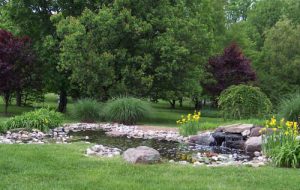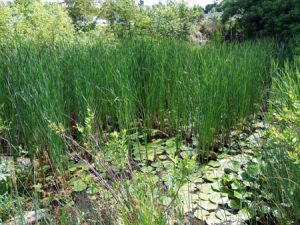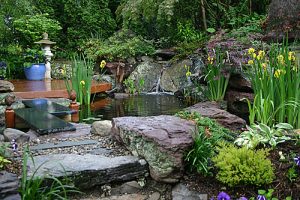Is Your Garden Pond Ready for Summer?
By Al Short, Fairfax Master Gardener Intern
Aquatic plant activity is controlled by water temperature, not air temperature, and water is generally cooler than the air in the spring. Many aquatic plants have been thrown away because they looked “dead” when everything else in the garden was growing. Aquatic plants should be treated like any other perennial plant. Look at your plants in terms of the need to divide, repot and fertilize them.
When you repot your plants, do not use peat or potting mix as it will float out of the pot. It is best to use gravel or the worst clay in your garden. For fertilization, use “lily tabs,” which are compressed fertilizer and can simply be pushed into the growing medium. Lilies should be fertilized once a month, and the aquatic marginal or bog plants around the edge of the pond can be fed quarterly.
Too many fish in a small pond can mean trouble. A few goldfish will live for years, will winter over, keep the pond bug free and are interesting to watch. When water temperature exceeds 50 degrees, start feeding your fish, but feed only once a day and what they can eat in three minutes. When you add water, remember Fairfax County water contains chlorine and chloramine, both of which are toxic to fish. Keep a container of “de-chlor” handy that can be purchased locally.People are concerned about mosquitoes breeding in a garden water feature. If you have fish, your pond will never have a mosquito problem because they eat the mosquito larvae before the larvae develop. If your water feature has no fish, you can control mosquitos by using “a mosquito dunk,” which is available at garden centers. A mosquito dunk is not harmful to fish, plants and birds and works by breaking the lifecycle of the mosquito larvae.
A garden pond is a “liquid tranquilizer.” It is highly addictive and non-prescription and will bring enjoyment to you and your family throughout the season. The key is to get started properly in the spring.
Resources
Water Garden Plants, Virginia Cooperative Extension


